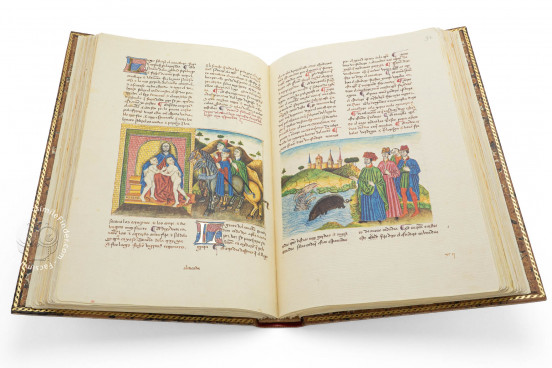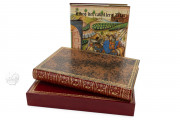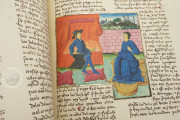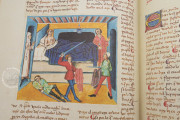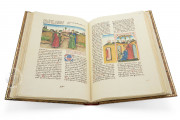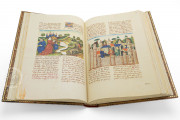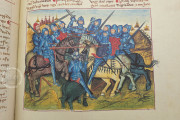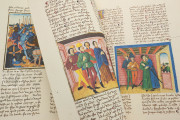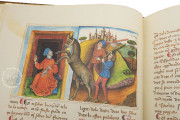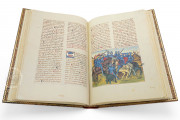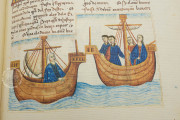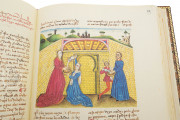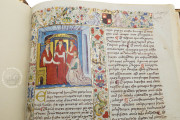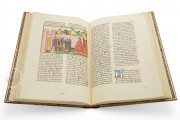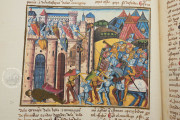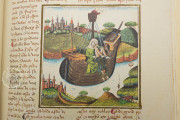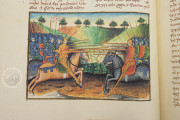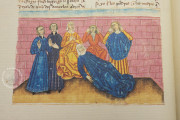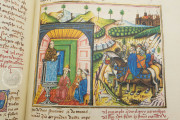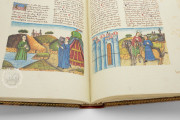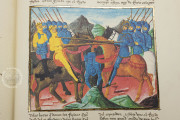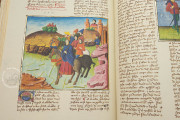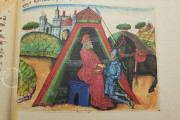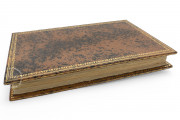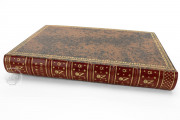The Romance of the Knight Zifar is an illuminated copy of the earliest fictional adventure story in Spanish, the Livro del cavallero Cifar by Ferrand Martínez. The manuscript was commissioned by Henry IV, King of Castile and Leon, in 1464. It features 242 detailed miniatures ranging in size from squarish column miniatures to half-page compositions extending across both columns of text. Many reflect the customs, dress, and interiors of the time of the manuscript's creation. The paintings are attributed to the workshop of the de Carrión brothers, Juan and Pedro.
This volume is one of the most significant and remarkable Renaissance manuscripts of Spanish tradition due to its history and the captivating story it tells. Also known as the Libro del Caballero Zifar, the manuscript was written and illuminated in the last quarter of the 15th century. Meant as an educational tool for princes, it tells the story of Zifar and his family on their journey to a better life.
The Romance of the Knight Zifar – Application of Christian Values
The story is intended to teach to apply the values of Christianity and to accept whatever comes our way. By accepting his misfortunes and showing tenacity, Zifar manages to become king, preaching the values of justice to his children, one of which – Roboan – becomes emperor thanks to his father’s teaching.
The Earliest Fictional Adventure Prose
The story is the earliest fictional adventure prose in Spanish (prior to Cervantes’ opera magna) and it was written around 1300 by Ferrand Martinez, a cleric of Toledo and seal bearer of King Alfonso X. Two manuscripts of the Romance of the Knight Zifar have reached modern times, one being the Paris manuscript (Spanish MS. 36).
The manuscript was created in Spain, more specifically in Castile, in the workshop of the brothers Juan and Pedro Carrion, no stranger to the newest painting techniques developed in Flanders. In all its 242 beautifully illuminated miniatures, one of the most striking features is the precision with which they represent the realistic scenes; the details of the attire tell us of the fashions of men and women at the time when the manuscript was made.
Likewise, the reader is offered specific details on the military world and everyday life of households typical of the time. The beautifully illuminated miniatures represent a window to a past so different from our present.
A Journey Across Royal Libraries
The manuscript was commissioned by Henry IV of Castile, which explains its magnificence and opulence and was certainly an item part of every royal book collection. Once Henry IV died, the manuscript went in the possession of Isabel I, as part of her personal treasury.
It then ended up in the library of Margaret of Austria in 1526 and in that of Mary of Hungary, sister of Emperor Charles V, in 1565. The Romance of the Knigh Zifar was then relocated to the library of the Duke of Burgundy where it remained until, in 1796, it was brought to Paris and entered the collection of the Bibliothéque nationale de France, where it remains.”
We have 1 facsimile edition of the manuscript "Romance of the Knight Zifar": Libro del Caballero Zifar facsimile edition, published by M. Moleiro Editor, 1996
Request Info / Price
